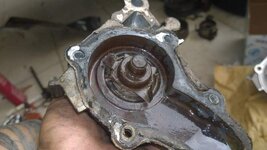- Joined
- Dec 31, 2007
- Messages
- 275
- Points
- 1,528
Uh.... it's not my discovery. LOL
Credits go to uponriversky for having the balls to try it on his newly rebuilt car!
thanks for that, my balls were as big as peas when conducting the experiment, but as day passes by i gained confidence it grows back to normal size hahaha

my car does not rumble, temperature is stable, and ive checked the radiator water solution almost every morning till today and solution has consistent blue colour and nothing looks worrying yet, im going to do this for another month, only then ill be fully confident that my experiment was safe
how u know i just had my car rebuilt?





